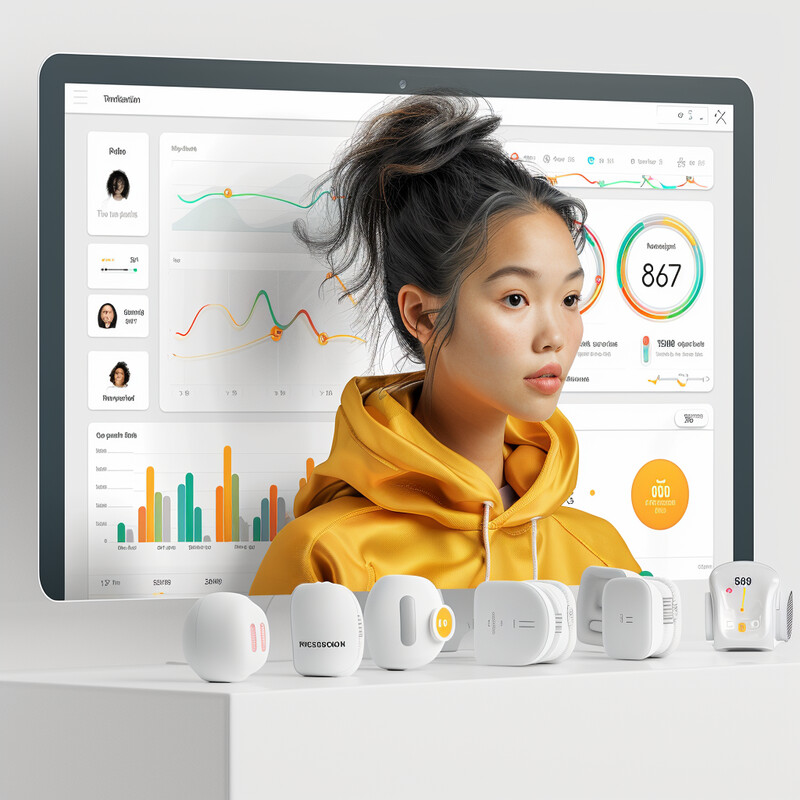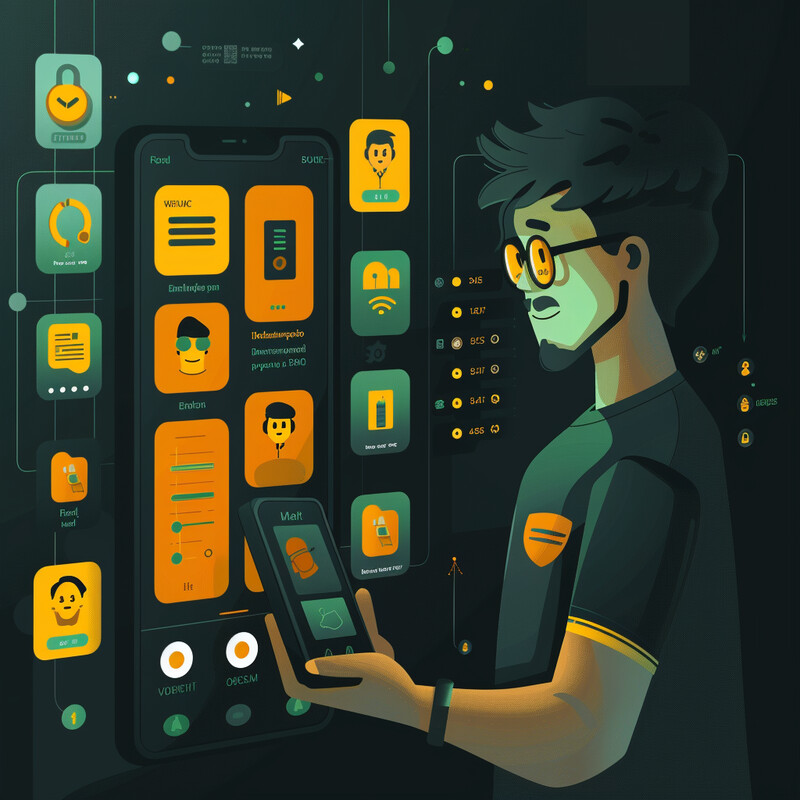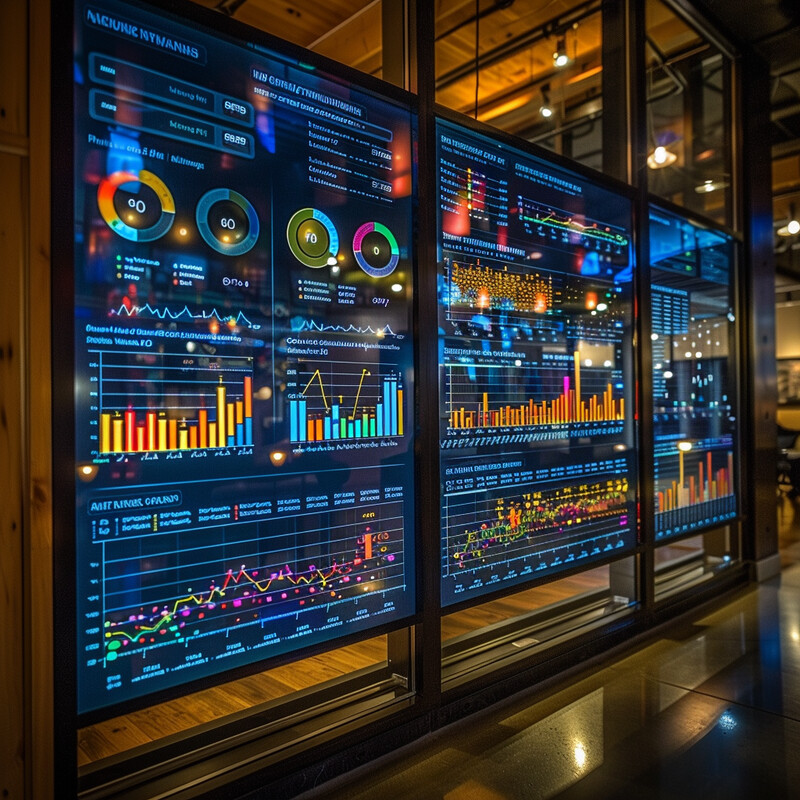1. Personalized Feedback Systems
AI-driven feedback systems analyze individual performance data to deliver tailored coaching and guidance. Instead of waiting for annual reviews, employees receive timely suggestions on strengths and growth areas. These platforms draw on project metrics, peer input, and communication patterns to personalize feedback loops. By empowering staff with continuous, data-driven advice, organizations foster a culture of ongoing improvement. Personalized feedback makes employees feel more supported and motivated, aligning their work more closely with personal and company goals.

Research shows substantial gains from AI-based feedback. A McKinsey analysis found that companies using AI in performance management saw up to a 20% productivity . In one case, IBM’s Watson Talent tool (an AI feedback system) was associated with a 15% increase in employee engagement. Similarly, studies published in leading business journals report ~30% higher productivity in firms adopting continuous AI-driven review processes. These results suggest that real-time, personalized feedback powered by AI can significantly boost employee motivation and output.
2. Mood Tracking and Sentiment Analysis
AI mood-tracking tools use natural-language processing to interpret employee communications and survey responses. By analyzing emails, chat messages, or pulse surveys, these systems infer overall workplace sentiment. Managers receive dashboards or alerts when negative mood trends appear, enabling early intervention. This continuous “listening” helps organizations catch issues like stress or disengagement long before they surface in exit interviews. In practice, sentiment analysis guides leadership to take actions (flexible scheduling, recognition drives, etc.) that sustain a positive work environment.

Companies leveraging sentiment analytics see marked improvements. One report found firms using real-time sentiment analysis achieved roughly 30% higher employee satisfaction than peers. Those same organizations also reported about a 15% reduction in turnover by acting on feedback signals. Gallup further notes that highly engaged teams (often identified via sentiment data) enjoy ~21% greater profitability. These figures indicate that continuously monitoring and responding to workforce sentiment helps prevent morale problems and drives better retention and performance.
3. Automated Onboarding Processes
AI streamlines the onboarding experience by automating routine tasks and personalizing new-hire training. For example, virtual assistants can guide recruits through paperwork and answer FAQs, while adaptive learning modules teach role-specific skills at an individual pace. This technology reduces administrative burdens on HR so staff can focus on mentoring. New employees receive a customized orientation to company culture and workflows, which helps them integrate more smoothly. In sum, AI-driven onboarding creates a welcoming first impression and accelerates a newcomer’s path to productivity.

Studies link structured onboarding (often AI-supported) to much higher retention and productivity. Aberdeen Group reports that companies with a standardized onboarding process see 82% higher new-hire retention and 70% greater new-hire productivity. AI further boosts efficiency: Deloitte found 64% of organizations using AI in recruiting/onboarding achieved significantly faster hires. These outcomes imply that automating initial logistics and tailoring training to each employee’s needs can dramatically improve how quickly newcomers contribute and stay with the company.
4. Customized Learning and Development
AI-enhanced L&D platforms create individualized learning paths by assessing each employee’s skills and goals. They recommend courses or resources that exactly match an employee’s gaps, adjusting in real time based on progress. Such systems turn generic training into a targeted experience, maintaining higher engagement. Employees benefit from content that aligns with their career aspirations, while managers see clearer data on skill development. Over time, this personalization speeds up upskilling and keeps teams’ competencies aligned with changing business needs.

Adaptive AI training produces strong productivity gains. One industry report noted that AI-curated learning programs can improve learning efficiency by ~57%. Academic research agrees that AI-driven training boosts workforce performance: a recent review found AI personalization “enhances workforce productivity and engagement” by aligning development with both organizational goals and individual strengths. In practice, companies using AI to tailor L&D have reported much higher course completion rates and skill adoption. These results suggest personalized AI training makes learning more effective and relevant, driving real improvements in output.
5. Predictive Analytics for Retention Risks
AI-driven analytics models scan HR data to identify employees likely to leave. By detecting patterns like disengagement or external job search signals, the system flags “flight risks” early. This gives managers a chance to intervene with targeted support (career talks, flexible options, etc.). Instead of responding to turnover after the fact, employers can act proactively. Over time, predictive retention tools help stabilize the workforce by keeping high-potential people from slipping through unnoticed.

Predictive HR analytics have cut turnover significantly. A survey by PwC found 87% of HR leaders believe AI helps retention, and organizations that applied AI-driven insights reported up to a 40% drop in turnover. In another study, firms using AI in talent management saw attrition fall by around 28%. These figures illustrate that using historical and current data to forecast separations — and then intervening — can markedly lower loss of personnel. Early warning through AI thus translates into more effective retention efforts.
6. Enhanced Communication Tools
AI-powered chatbots and writing assistants improve workplace communication by ensuring clarity and speed. They can instantly draft or refine messages, translate between languages, or surface relevant information from documents. For routine queries, chatbots give instant answers (e.g. HR policy or IT help), freeing up staff time. Real-time translation and tone-check tools also help cross-cultural or hierarchical exchanges. By reducing misunderstanding and delivering information faster, these tools make collaboration smoother and more efficient.

These AI tools are widely adopted and beneficial. For example, a Deloitte/Forbes survey found 73% of U.S. companies use or plan to use AI chatbots for internal messaging, and 61% use AI to optimize email communications. Early results show these tools cut communication delays and errors: one estimate suggests AI writing assistants can reduce miscommunication incidents by up to 30%. In practice, organizations report shorter response times and clearer messages. This enhanced efficiency helps teams stay aligned and projects move faster.
7. Recognition and Rewards Programs
AI makes employee recognition programs more personalized by matching rewards to individual achievements and preferences. For example, the system might automatically give a “thank you” point when someone hits a project milestone, or suggest a reward tailored to an employee’s interests. This ensures praise feels genuine and relevant. Over time, employees receive more frequent and meaningful recognition. Personalizing rewards in this way boosts morale because individuals feel seen and valued for their unique contributions.

Data link recognition directly to engagement and retention. Gallup reports that employees not feeling recognized are twice as likely to plan quitting in the next year. AI-powered programs help avoid that: by issuing timely, personalized praise, they encourage employees to stay. In fact, a workforce survey found about 78% of employees said they would be more productive if they received recognition more often. These findings imply that using AI to continually acknowledge achievements can significantly raise motivation and productivity across a team.
8. Real-time Engagement Metrics
AI-based analytics platforms track engagement continuously, not just via annual surveys. They aggregate pulse-survey results, collaboration usage, sentiment scores, and other indicators on dashboards. Managers see near-real-time “pulse” on team health (engagement, burnout risk, etc.). This live data allows quick adjustments—for example, reallocating workload or boosting recognition when signals dip. By treating engagement as a dynamic metric, organizations can be proactive about culture changes rather than reactive after problems worsen.

Continuous engagement tracking produces measurable benefits. One study found teams using real-time feedback tools (like integrated pulse surveys) had about 14% higher productivity than teams using only periodic reviews. Likewise, organizations that prioritized real-time engagement metrics achieved roughly 27% higher retention compared to peers relying solely on annual surveys. This evidence indicates that instant insights into employee sentiment enable managers to address issues early, yielding more productive and stable teams.
9. Health and Well-being Analysis
AI-driven health platforms analyze wellness data (from wearables, apps, and health assessments) to identify well-being trends. They might spot rising stress, inactivity, or poor sleep patterns among employees. With those insights, companies can intervene with personalized programs (e.g. tailored nutrition plans or mindfulness reminders). AI can also predict burnout risk by correlating workload with reported stress levels. Overall, these tools shift well-being support from one-size-fits-all to highly individualized, helping keep employees healthy and engaged.

Proactive wellness analytics pay off financially. A Harvard Business Review study found that each dollar spent on wellness programs returns about $5 in productivity gains and lower health costs. Given the CDC estimates U.S. businesses lose roughly $1,685 per employee per year to absenteeism, AI-driven prevention can cut those losses. For instance, employees who maintain balanced diets (often guided by AI apps) are 25% more likely to perform at high levels. These data show that using AI to tailor health interventions both improves employee performance and reduces costly downtime.
10. Diversity and Inclusion Initiatives
AI tools help monitor and promote diversity by analyzing hiring, promotion, and pay data for bias. For example, algorithms can anonymize resumes during recruiting or flag non-inclusive language in job ads. AI can also review performance reviews and salary gaps to highlight inequities. These insights enable companies to adjust policies (like setting recruitment targets or bias training) and ensure fair treatment across demographic groups. Used responsibly, AI thus becomes a force for inclusion by providing objective metrics on representation and equity.

AI both uncovers bias and underscores inclusion’s payoff. University of Washington researchers found that AI hiring models strongly favored ‘white-sounding’ names (85% of the time) versus names associated with Black men (0% of the time). Such findings spur firms to correct algorithms. At the same time, diversity is a proven asset: McKinsey reports companies in the top quartile for ethnic diversity are about 27% more likely to achieve above-average profitability, and those with gender-diverse leadership were 39% more likely to outperform peers. By tracking D&I metrics with AI, businesses can work towards these gains while reducing systemic bias.